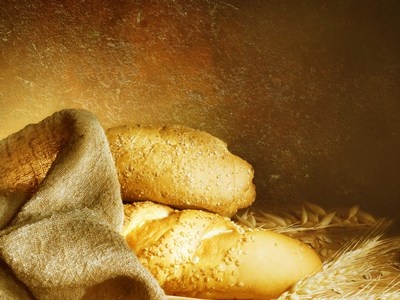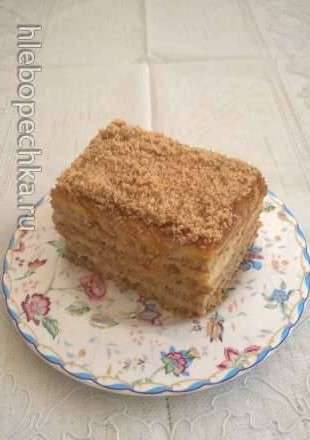|
 The genus of wheat has many species, but only two are most widespread: soft and durum wheat. The grain of soft wheat has a rounded shape, with a lot of hairs at a narrow end (beard). The durum wheat grain is elongated, with a less pubescent beard. Wheat species are divided into a large number of varieties and varieties. Wheat varieties differ depending on the structure and color of the ear and the color of the grain. The genus of wheat has many species, but only two are most widespread: soft and durum wheat. The grain of soft wheat has a rounded shape, with a lot of hairs at a narrow end (beard). The durum wheat grain is elongated, with a less pubescent beard. Wheat species are divided into a large number of varieties and varieties. Wheat varieties differ depending on the structure and color of the ear and the color of the grain.
The most common wheat varieties:
Soft - Albidum, Lutescens, Milturum, Erythrospermum, Cesium, Gostianum.
Durum wheat (almost exclusively spinous) - Gordeyforms, Meljanopus.
Wheat is divided into spring and winter wheat. Spring wheat is sown in the spring, and in the same year it produces a harvest. Winter wheat is sown in the fall, in the fall it germinates, hibernates and in the spring it again gives a stem with ears and fruits. Winter wheat can be easily vernalized by exposing the moistened grain to low temperatures.
There are spring and winter soft wheat, while hard wheat is only spring. Our durum wheat growing in the southeast of the European Union and the North Caucasus is famous all over the world.
For the correct use of grain resources in the national economy of the USSR, a classification of grain crops has been developed according to their qualitative characteristics,
According to this classification, given in the standard, wheat is divided into types, subtypes and classes.
The basis for dividing wheat into types is the form (spring or winter), type (soft or hard) and grain color (red or white).
Wheat is subdivided into five main types, which, in turn, are divided into subtypes depending on the hue, grain color and vitreousness of the endosperm. Each subtype, depending on a number of indicators of grain quality, is subdivided into classes. These indicators include the volumetric weight of grain, the amount of impurities (weed and grain), the amount of fine grain and moisture.
 Under a microscope in a grain of wheat, one can distinguish: 1) the shell, 2) the mealy nucleus, or endosperm, 3) the edge layer of the endosperm, or the aleurone layer, and 4) the embryo. Under a microscope in a grain of wheat, one can distinguish: 1) the shell, 2) the mealy nucleus, or endosperm, 3) the edge layer of the endosperm, or the aleurone layer, and 4) the embryo.
Outside, the grain is covered with shells. There are two types of shells: fruit and seed. Fruit consists of three layers, cells of each are elongated along or across the grain axis, and both forms of cells alternate. This gives the shell strength. The seed coat consists of two layers, the outer one is called pigment and sometimes contains a dye. The remaining layers of grain shells are colorless and transparent. The color of the grain depends either on the color of the pigment layer or on the color of the endosperm that shines through the shell. The aleurone layer consists of a single row of large thick-walled cells filled with a proteinaceous substance with included fat droplets.
The mealy core is filled with large thin-walled cells containing reserve nutrients (starch grains, proteins, and others).
The embryo, located in the blunt part of the grain, is separated from the mealy kernel by a special partition called a pinch. The cells of the embryo are alive, capable of reproduction, from which a sprout and roots develop. The embryo is rich in proteins, sugar and fat.
A depression - a groove - runs along the grain.
Average weight ratio of individual parts of wheat grain: shell 5%, aleurone layer 8%, mealy kernel 85% and germ 2%.
With the direct determination of the constituent parts of grain, NS Suvorov found somewhat different relationships in wheat.
The chemical composition of wheat grain varies depending on the type of wheat, grain size, climatic conditions of growth and other reasons.
Average data on the constituent parts of wheat grain
(in% on dry matter)
| Name of the components of grain |
Soft wheat |
Durum wheat |
| Fruit shell |
3,84 |
4,32 |
| Seed |
2,23 |
2,04 |
| Aleurone layer |
8,72 |
7,90 |
| Embryo |
3,12 |
2,80 |
| Endosperm |
81,12 |
81,84 |
| TOTAL |
100,0 |
100,0 |
Chemical composition of wheat grain on average (in%.)
Water ......... 13.5 Starch ....... 67.8
Protein ......... 12.5 Fiber ...... 2.5
Fat ......... 2.0 Ash ......... 1.7
The sugar content in grains ranges from 0.2 to 1%.
Dry hot summers, especially during grain ripening, lead to a relative increase in protein content. This is explained by the fact that the accumulation of protein occurs in the first period of grain formation, and the accumulation of starch, filling the grain occurs in a later period of ripening. The climate of different geographic points has a great influence on the protein content. With the growing continentality of the climate in the grain, the protein content increases. There is more protein in the grains of the same wheat variety sown in the southeast of the European part of the Soviet Union than in the one sown in the northwest. In arid regions, when irrigated, the quantity and quality of wheat proteins do not decrease, and some varieties, when irrigated, even give an increase in protein both per unit area and in its content in grain. The protein content of the grain also depends on the fertilization of the soil. The presence of nitrogen is especially important.
The approximate chemical composition of individual parts of the grain is shown in the following table.
As you can see from the table, almost all the fat is distributed between the aleurone layer and the embryo. Most of the starch is in the mealy core. Fiber and minerals are concentrated mainly in the membranes. Protein is found in all parts of the grain.
Average chemical composition of individual parts of wheat grain (in%)
| Chemical composition |
Sheath including aleurone layer |
Endosperm |
Embryo |
Whole grain |
| Water |
12,5 |
13,0 |
12,5 |
12,9 |
| Fats |
3,3 |
0,8 |
13,1 |
1.3 |
| Starch and sugar |
43,8 |
74,3 |
31,2 |
69,5 |
| Nitrogenous substances |
16,4 |
10.5 |
35.7 |
11,6 |
| Cellulose |
18,0 |
0,7 |
1,8 |
3,1 |
| Minerals |
6,0 |
0,7 |
5,7 |
1.7 |
|
 The genus of wheat has many species, but only two are most widespread: soft and durum wheat. The grain of soft wheat has a rounded shape, with a lot of hairs at a narrow end (beard). The durum wheat grain is elongated, with a less pubescent beard. Wheat species are divided into a large number of varieties and varieties. Wheat varieties differ depending on the structure and color of the ear and the color of the grain.
The genus of wheat has many species, but only two are most widespread: soft and durum wheat. The grain of soft wheat has a rounded shape, with a lot of hairs at a narrow end (beard). The durum wheat grain is elongated, with a less pubescent beard. Wheat species are divided into a large number of varieties and varieties. Wheat varieties differ depending on the structure and color of the ear and the color of the grain.




